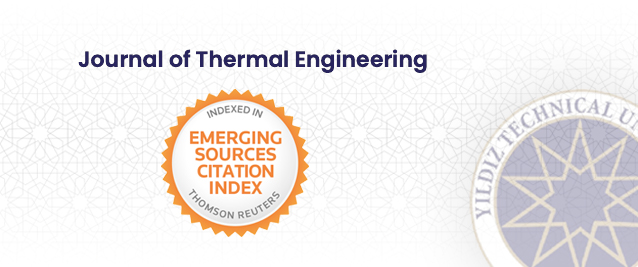Abstract
Radiative transfer is one of the methods of energy transport that includes in a wide range of applications and we feel it in our daily lives. Thermal radiation transfer plays an effective role in the utilization of renewable energy. The radiative and optical properties, as well as the nature of the radiative scattering, are the basic principles of the thermal radiation transfer. The unique properties of nanofluids offer the unmatched potential for use in energy utilization, the working temperature has a dominant effect on the stability and radiative properties of such type of suspensions. In this research, the radiative transfer (optical properties, the independent and dependent scattering, and radiative properties) in water/SiO2 nanofluids are investigated; taking into consideration the effect of working temperature on the stability of the particles. The effect of the temperature on the stability ratio and particle agglomeration is determined by estimating the radius of gyration of particle agglomerates using the scaling law based on the stability (DLVO) method. The single-scattering approximation (SSA) is used to calculate the radiative properties in the case of independent scattering, while the quasi-crystalline approximation (QCA) is used for this purpose in the case of dependent scattering. The results show that the temperature has a significant effect on the stability of particles and radiative transfer in nanofluids. It was observed by comparing the results from the two approximation methods in the Rayleigh regime. Particle size affects the physical and scattering cross-sectional areas which give a general understanding of the scattering mechanism from small to large particles.























